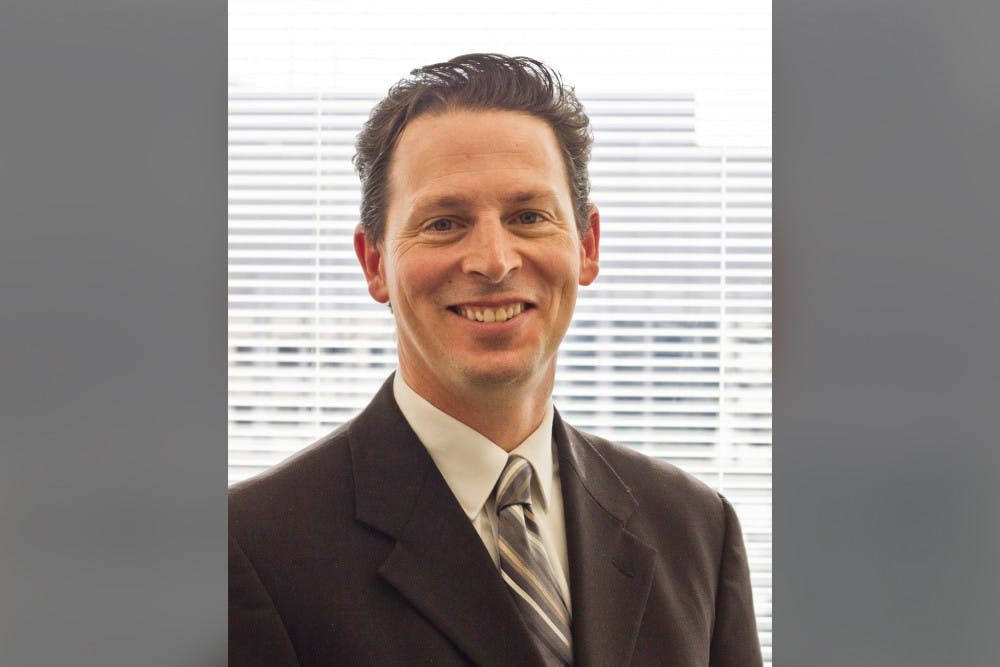
Photo from Office of University Communications
Penn appointed Matt Sessa as the new executive director of Student Registration and Financial Services in early January. As executive director, Sessa will lead the registrar, bursar, financial aid, and operations departments within SRFS.
Sessa's appointment comes at a time when SRFS has attracted controversy regarding some of the changing policies, and especially the degree of varying information students say they receive about the changes.
Some of these policies included reductions in financial aid for those living off campus, as well as for fifth-year students on financial aid.
In his new position at Penn, Sessa said he hopes to develop a one-stop model for customer service. Now, students calling SRFS with complex questions often get transferred or referred to other contacts.
“It took me a couple of tries to get the answers I wanted,” said College freshman Ashley Anumba, who called SRFS over the summer to get more information about her financial aid statement. “Some people didn’t understand my issue so I was getting answers that weren’t corresponding to the answers that I needed.”
The goal of the one-stop model is to streamline the process and make it easier for students and families to access information.
“Our goal would be to answer 80 percent of the questions with that first contact,” Sessa said.
In order to streamline this process and make sure the same information is delivered to all students, he plans on cross-training staff members and providing them with technology assistance that will aggregate information in one knowledge base.
Sessa said that he also hopes to design a University-wide financial literacy program for students.
Through the program, Sessa said he aims to inform students of correct ways to budget, responsibly borrow loans, and strategize in retiring debt.
“This is one of those areas where I believe student involvement in the development of the program is important,” Sessa said.
College freshman Ava Cruz said she called SRFS to ask questions that fell into that category.
“Being a first generation college student, I didn’t have anybody else in my family that went through this before. Everything was new to me,” she said.
Although the details of the program have yet to be determined, Sessa said that he imagines there being various components to it.
“I am still learning the Penn landscape, so I need to determine what work has been done to date, what technology is available to leverage,” Sessa stated. “With that said, I envision the financial literacy program having multiple channels of engagement," specifically noting, "mobile, web, face-to-face counseling when appropriate.”
Before redesigning services, however, Sessa hopes to get student feedback first.
“We need to make sure we are designing those services for them and not trying to determine what they need without getting direct input,” he said.
Prior to joining the Penn staff, Sessa worked as the deputy chief operating officer at the Federal Student Aid Office at the United States Department of Education. At his position within the Department, Sessa gained valuable experience partnering with schools and financial institutions.
“His vast expertise in federal aid programs and managing a complex organization structure will make him an invaluable member of our leadership team,” said Vice President for Finance and Treasurer MaryFrances McCourt in a press release.
Before working at the Department of Education for almost four years, Sessa also held a senior vice president position at the Pennsylvania Higher Education Assistance Agency.
“It was good work and important work, but you didn’t always get to see how your customers were interacting with some of the services,” said Sessa. At Penn, Sessa is looking forward to being present on campus and understanding student experiences firsthand.
The Daily Pennsylvanian is an independent, student-run newspaper. Please consider making a donation to support the coverage that shapes the University. Your generosity ensures a future of strong journalism at Penn.
Donate







